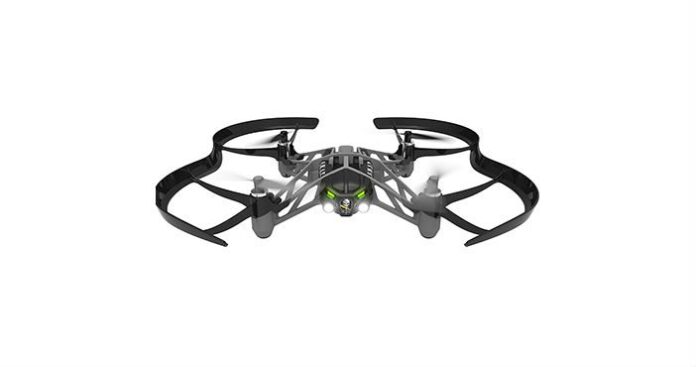Drones are already in use for cell tower inspections, next step could be drones as small cells
AT&T has been testing potential drone applications for a year now, and this week the company announced the trial phase of its national drone program. The carrier foresees drones as mobile, miniature LTE base stations that will deliver extra coverage and capacity to crowded outdoor venues during events.
In addition, AT&T is using drones to perform aerial inspections of cell towers, a capability the carrier is demonstrating this week at its SHAPE conference in San Francisco.
“We’re pretty excited about this drone technology here at AT&T,” said Al Burke, assistant VP for RAN hardware and software development at AT&T. “We see this as a faster and safer way to do certain types of tower work. We first started investigating the use of drones at our foundry and research and development center about a year ago, and we’re starting up now a national program of drones to conduct cell site inspections. We have done some inspections and plan to continue that, and AT&T also represents the telecom industry on the Micro Unmanned Aircraft Systems Aviation Rulemaking Committee.”
The committee is a group commissioned by the Federal Aviation Committee to develop recommendations for performance-based regulations that would let certain unmanned aircraft operate over people not directly involved in the flight of the aircraft.
Burke said drones can inspect a tower before a climb so the tower technician knows what equipment to take to the tower top, adding the information can be valuable when a storm or a birds’ nest has impacted a tower.
In addition to helping tower technicians prepare for a climb, drones can eliminate some tower climbs altogether, according to Lee Priest, CEO of drone service provider ETAK Systems. Priest said operators are under significant pressure to cut tower operating costs and are turning to drones to reduce the number of times climbers have to scale a tower.
“It costs between $2,000 and $5,000 for a tower climb, depending on what the scope is, and a drone flight is significantly lower than that,” said Priest. “Even providing the post-installation inspection coupled with the three-dimensional model is much lower than that $5,000. So I think that’s where you’re seeing the interest from carriers.”
AT&T also is working with Intel to test the performance of the LTE network at high altitudes using drones. The companies want to find out how altitude impacts video streaming and telematics.
“Our LTE network is uniquely positioned to connect industries like delivery, agriculture, construction and insurance,” said Chris Penrose, SVP for IoT Solutions at AT&T. “AT&T and Intel will be testing how the network can enable the most exciting business use cases for drones.”
For more information on drone use in the tower industry, see RCR’s tower technology feature report and webinar, featuring Al Burke of AT&T and Lee Priest of ETAK Systems.
Follow me on Twitter.

